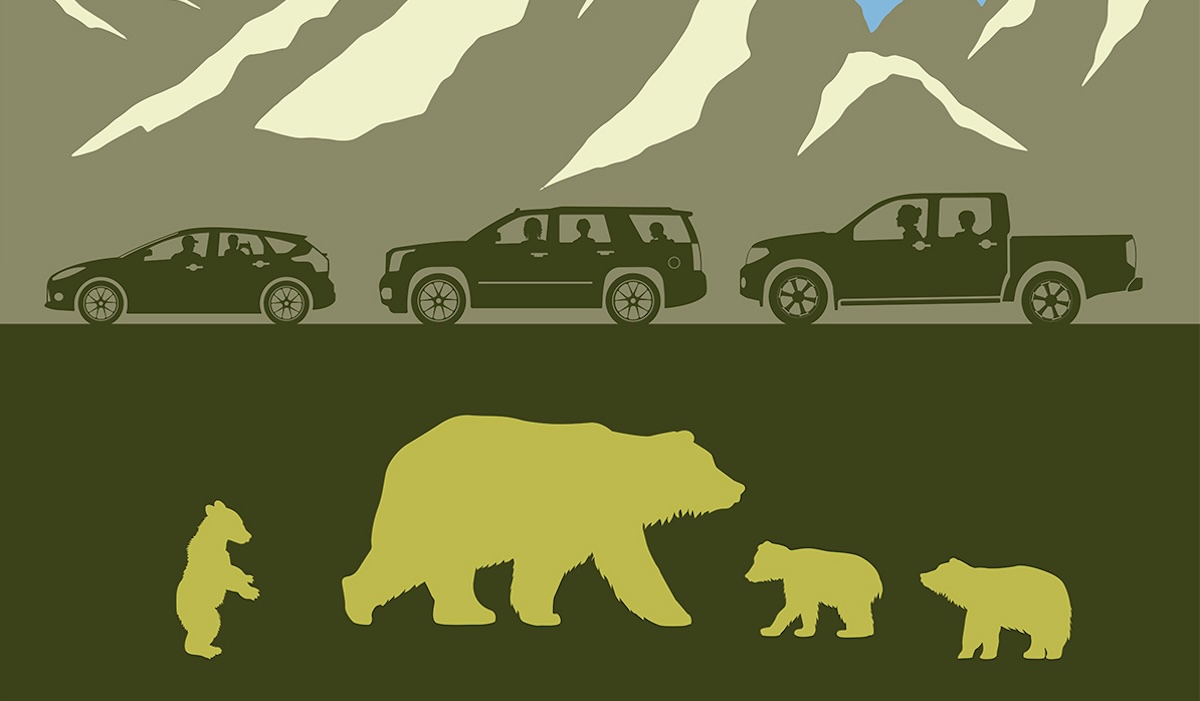Researchers work to perfect conservation signs in nature reserves

LAWRENCE — A University of Kansas professor is headed to the beaches of Lake Tahoe this summer to continue his experiments refining the best types of nature-conservation signage.
Jeremy Shellhorn, professor in the KU School of Architecture & Design, and his University of Montana colleague and fellow Leave No Trace science team member, William Rice, have formed the Conservation Communication Collaborative, which has received a grant from the 65-year-old League to Save Lake Tahoe (aka Keep Tahoe Blue) for the work.
Shellhorn said the Tahoe study will build upon the work he, Rice and Montana graduate student Miranda Foster did last summer on a project to gauge the effectiveness of signs meant to minimize human-bear interaction in an area near Yellowstone National Park.
The paper they wrote – “Assessing Grizzly Bear Safety Signage Designs: Applying a Personal Responses Tour Through an Outdoor Gallery installation” – was published May 10 in the Journal of Interpretation Research.
Shellhorn said the League to Save Lake Tahoe is developing a new “blue beaches” program, “which they want to brand so that it has a connection to Keep Tahoe Blue, but which is its own program.”
The league wants to encourage people not to litter, especially with plastic, or to let their dogs roam free (and poop) on the shoreline, or otherwise pollute the alpine water.
“We'll design the brand identity for it, and that will be applied to signage that we will place at different strategic spots, from the parking lot to the beach,” Shellhorn said. “We'll be surveying folks as they walk along so we can get their feedback on what they say is most effective.
“And we will be observing beachgoer activity to see which signs are better at helping change behavior.”
The 2024 grizzly bear study examined which combinations of typeface, color and text people found most convincing when it came to promoting the desired behavior – keeping tourists inside their vehicles and away from any physical interaction with bears. The researchers interviewed visitors who stopped along Wyoming’s Togwotee Pass, south of Yellowstone in the Bridger-Teton National Forest.
Shellhorn said when it comes to effective crowd control and the reasons behind it, park rangers and other conservation leaders know what to say.
“It's how to say it. That's where the design component comes in,” Shellhorn said. “How are you expressing these things? What does it look like? How do design choices like typeface, color and visual representation connote desired meanings?
“What we found in the Teton study was the effectiveness of really playing up this idea of heritage ... almost nostalgia, and pride, for national parks and the Forest Service.”
Shellhorn said that his colleagues brought a printer to the site of last summer’s study so that they could print out fresh iterations of the signs they were testing in response to feedback they received. They’ll do the same this year.
“The most effective sign was one that we designed there,” Shellhorn said. “It was a sign that didn't tell people ... not do something or tell them to slow down. It actually just invited them to look at wildlife. And in the process of inviting them to look at wildlife, they would naturally slow down.”
The sign conveyed the “keep your distance” message graphically, Shellhorn said, by showing people inside their vehicles as they passed bears on a roadside. The paper refers to this as “telegraphic messaging” — that is, demonstrating the desired behavior.
The study showed that high-contrast imagery is best for roadside signs. It also revealed a preference for incorporating official parks-type logos to convey authority.
Sign makers must aim for novelty and a textual tone that avoids being perceived as either too aggressive or too lighthearted, Shellhorn said.
“We were able to create a list of design principles that were most effective,” Shellhorn said. “So on this Tahoe study, we'll design the signs with those in mind.”